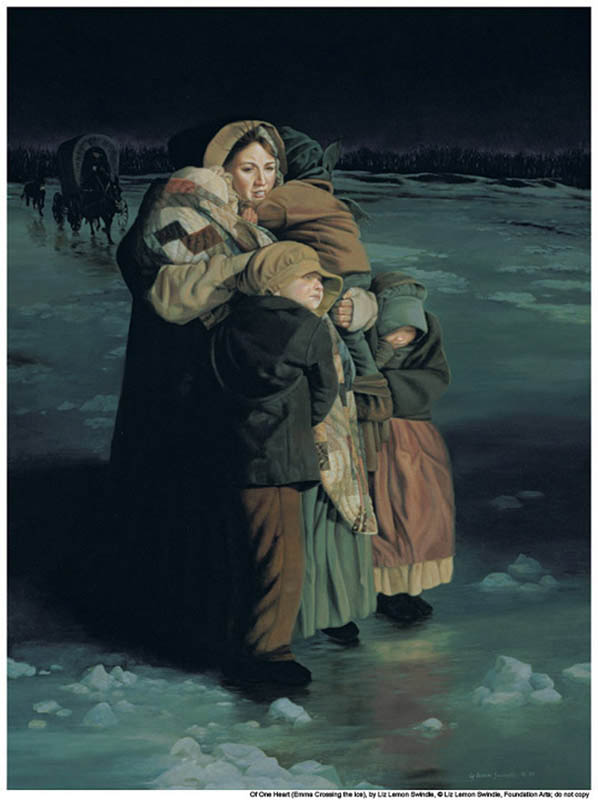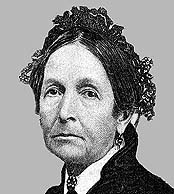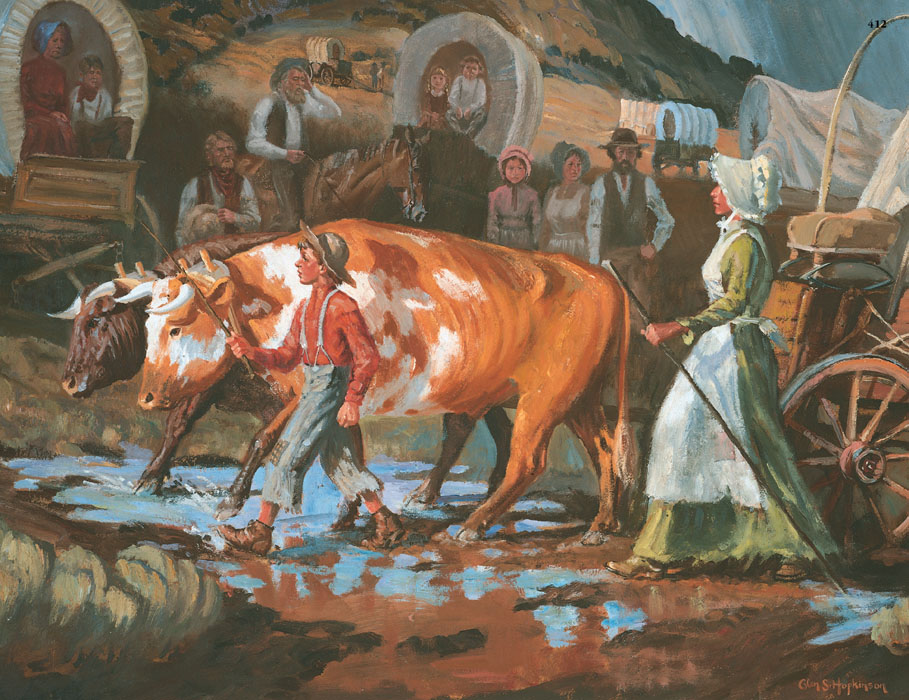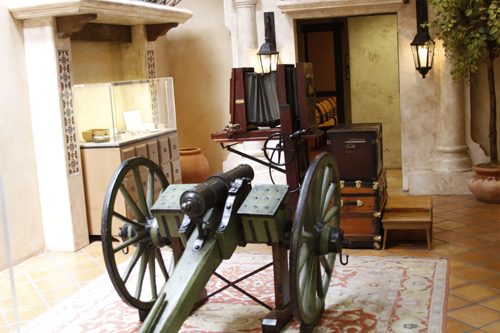Mormon history is a hot topic of debate and discussion both among Mormons (the nickname sometimes applied to members of The Church of Jesus Christ of Latter-day Saints) and non-Mormons alike. There are many false stories about Mormon history circulating, but there are also solid efforts at reliable research. The Mormons themselves, often through Brigham Young University, conduct serious peer-reviewed research and work to present a balanced view of Mormon history events that occur, even if they are not the moments Mormons are most proud of.
 One source for Mormon history is the Church History website, a part of the Mormon collection of official websites. An exciting project on that site is the Joseph Smith Papers project. This ongoing project will be presented in its entirety online and selected documents are also gradually being published. It will eventually contain every existing document he wrote or dictated or that in any way were influenced or directed by him. The final project will involve thousands of pages. The website is being filled with photographs of each document, demonstrating that the transcriptions are accurate. This will allow serious students of Mormon history to study Joseph Smith in a way never before possible.
One source for Mormon history is the Church History website, a part of the Mormon collection of official websites. An exciting project on that site is the Joseph Smith Papers project. This ongoing project will be presented in its entirety online and selected documents are also gradually being published. It will eventually contain every existing document he wrote or dictated or that in any way were influenced or directed by him. The final project will involve thousands of pages. The website is being filled with photographs of each document, demonstrating that the transcriptions are accurate. This will allow serious students of Mormon history to study Joseph Smith in a way never before possible.
For those who just want an overview of Mormon history, the Mormons have published a very basic overview in a small book called, “Our Heritage.” The link on the title takes you to the book’s full text, available online at no cost and without registering.
One of the most powerful chapters in this book is the chapter on the Mormon settlement in Missouri. This is chapter four and can be read here:
This was one of the most trying times in Mormon history and demonstrated that the United States, despite being founded on religious freedom, had a long ways to go in reaching its ideal. A later constitutional amendment allowed the federal government to enforce federal laws at the state level, but this would not happen until after the Civil War. At the time the Mormons settled in Missouri, from about 1834 to 1838, the federal government could not have, even if it had wanted to, enforced the right of the Mormons to practice their own religion in Missouri and this led to a period of extraordinary government-sanctioned, in many cases, persecution.
Mormons began moving into Missouri while the church as a body was still living in Kirtland, Ohio. When more space was needed, Joseph Smith sent them to Missouri after praying for a location. He instructed them to begin buying available property there. In 1833, when Mormons were celebrating the Mormon’s third anniversary as a church, there were an estimated 1000 Mormons in Missouri who attended that celebration.
However, persecution soon began. Groups of people began to stir up fears about Mormons. Missouri allowed slavery and wanted to be admitted to the Union as a slave state, but the Mormons were abolitionists for the most part. There were fears they would vote against slavery and get it removed from the state. To that end, anti-Mormon groups circulated a story that the Mormons were actively inviting all free black and mulatto Americans to move to Missouri, an untruth designed to capitalize on the racism of the state. Parley P. Pratt, a Mormon leader, pointed out it would actually be pointless for Mormons to do this, since Missouri law allowed the state to remove any free black person from the state, and did so with a few exceptions. The Mormon settlement included a small number of free black Americans. In addition, agitators were unhappy that Mormons interacted with the Native Americans. Of course, there were also religious disagreements.
A mob of 400 men approached the Mormon settlement with a “secret constitution” written to stop the Mormons. It ordered them to not allow any more Mormons into the state, to stop publishing their newspaper, and to leave the county. These demands were, of course, not legal, so the Mormon leaders refused to sign. The printing press was destroyed by the mob and the building and the home of the publisher were destroyed.
Edward Partridge, the bishop, and Charles Allen were taken to the town square. They were ordered, under threat of death, to renounce the Book of Mormon or die. They chose death and were tarred and feathered, an extraordinarily painful act of terrorism, but lived.
A few days later, the mob returned and the church leaders offered up themselves in exchange for the safety of the members. The mob ignored the offer and demanded everyone leave or face danger. The church, at the advice of the current governor, obtained lawyers to defend them. After a number of Mormons were beaten, a battle broke out, resulting in a few deaths on both sides. The governor ordered Colonel Thomas Pitcher to take away the weapons of both the mob and the Mormons, but instead Pitcher took only the Mormon weapons and gave them to the mob. So much danger ensued, the Mormon leaders were forced to instruct their members to leave. The members were forced to survive in rough camps along the river in the middle of winter for a time. When the Church in Kirtland sent help, the help was met by a mob that attacked with cannons. To the surprise of the mob, a powerful rain storm suddenly started, forcing the mob to run for cover. When the storm stopped, the weapons were destroyed by the rain.
One of the more terrifying events in Mormon history happened in Haun’s Mill. A new Missouri governor, Governor Boggs, issued an extermination order that is unique in American religious history in that it ordered the extermination of the Mormons in the state. Three days later, with the order making it clear there was no danger in attacking Mormons, a mob of 200 men attacked the Mormons. They ordered the men and boys—even the male children—into a barn. They then began shooting into the barn, as well as murdering those who tried to escape. Fifteen men and boys were injured and seventeen were murdered.
Shortly after this event, the state militia captured Joseph Smith and ordered him shot by a firing squad for the crime of being Mormon. Unexpectedly, General Alexander W. Doniphan refused to do it and threatened the general of the militia who was to carry it out instead that he would be tried by an earthly militia if he did because it was illegal and immoral. He said it would be nothing more than murder.
Mormon history is filled with moments that challenge the comprehension of those who have studied the Constitution. It was a dark time in both Mormon history and American history. However, today, with stronger protections in place, Mormon history has a brighter tone to it. Today, Mormons live all over the United States, and even all over the world. They donate millions of dollars, supplies, and hours to humanitarian projects world-wide. They are even experiencing something of a Mormon Moment as two Mormons run for president of the United States. They live in ordinary neighborhoods, have jobs throughout their communities and educate their children in public schools, private schools or homeschools as they choose. Seldom does a Mormon, at least in the United States, find himself facing down a mob with cannons or even guns…words maybe, but not guns.
Mormon history…it’s quite a story.
About Terrie Lynn Bittner
The late Terrie Lynn Bittner—beloved wife, mother, grandmother, and friend—was the author of two homeschooling books and numerous articles, including several that appeared in Latter-day Saint magazines. She became a member of the Church at the age of 17 and began sharing her faith online in 1992.





